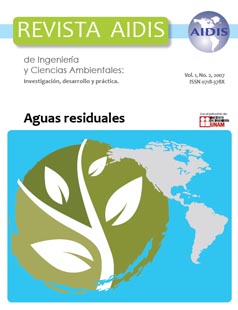Remoción de nitrógeno en aguas residuales a través de las plantas typha dominguensis y lemna sp.
Main Article Content
Abstract
The need to remove nutrients from wastewater to prevent harm to water bodies, has led to the search of new technologies that might provide this removal, and whose construction, operation and maintenance are appropriate to the environment. Constructed wetlands belong to these particular technologies, being the vegetation one of their basic components. Its role in the removal of nutrients has been questioned by some researchers, because their main action relies on nitrification/denitrification processes. This work intends to evaluate the removal of nitrogen in small‐scale constructed wetland systems, using native plants such as Typha dominguensis and Lemna sp. The parameters NTK, N‐NH3, N‐NO2, N‐NO3, BOD and pH were measured weekly, during 4 months, in five different treatments prepared in triplicate: effluent or residual water (RW); residual water plus supporting material (WS); residual water plus supporting material plus the floating plant Lemna sp (L); residual water plus supporting material plus the emerging plant Typha dominguensis (T); and residual water plus supporting material plus Typha dominguensis (T), plus Lemna sp (LT). The results obtained favored the T and LT treatment for all the parameters studied (NTK, N‐NH3, N‐NO2, N‐NO3 and COD), whereas the RW and WS systems achieved a lower removal for all parameters than L and TL treatments. Problems of adaptation between microalgae and the Lemna sp did not allowed the development of the plant as expected, which caused the L treatment to achieve the lowest removal percentages for NTK and N‐NH3, showing an increment for N‐NO2. The results showed the role played by Typha dominguensis in the processes of nitrogen and organic matter removal, that occur inside the wetlands, and also confirmed the important activity carried out by bacteria and microalgae in the removal of nutrients from wastewater.
Article Details
How to Cite
[1]
Núñez, M., Cárdenas de Flores, C.H., Ramírez Acurero, Y., Rincón, S., Saules, L. and Morales, E. 2009. Remoción de nitrógeno en aguas residuales a través de las plantas typha dominguensis y lemna sp. Revista AIDIS de ingeniería y ciencias ambientales: Investigación, desarrollo y práctica. 1, 2 (Nov. 2009).


